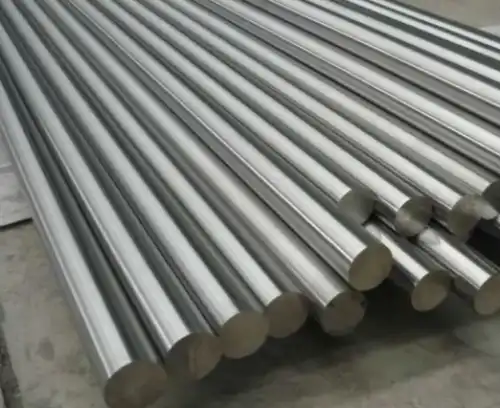Although titanium rods have excellent corrosion resistance, in certain specific environments, we still need to perform surface treatment on them to enhance their corrosion resistance and wear resistance. Below, I will give you a detailed introduction to the titanium rod surface treatment process:

Atmospheric oxidation treatment:
Process description: Place the titanium rod in a high-temperature atmosphere to thicken the oxide film on its surface. The thickness of the oxide film increases with the increase in temperature and the extension of time.
Effect: This method is effective for both general corrosion and crevice corrosion of titanium, and the method is relatively simple.
Limitations: Durability is not reliable enough, because the thickened oxide film will become thinner over time in a corrosive environment, eventually leading to corrosion.
Wet coating method: Process description: Mainly Cr and Ni-P are plated on titanium rods. Since it is difficult to directly plate Cr on titanium rods, Ni is usually plated first, and then Cr.
Effect: The electrolytic method has a fast film formation speed and a thickness of up to several microns. It is an effective wear-resistant surface treatment method.
Thermal diffusion method:
Process description: Glow discharge plasma is used to destroy the oxide film on the titanium surface, and then nitriding is performed.
Effect: The thickness of the nitrided film can be increased from 0.7um to 5.0um, and the surface hardness reaches 1200-1600Hv, with good wear resistance.
Overlay method:
Process description: Use plasma transfer arc to perform overlay hardening modification on the surface of the titanium plate.
Effect: It has excellent wear resistance, is a simple method, and can prevent the decline of mechanical properties.
Limitation: It is limited to processing thick and large workpieces.
Sputtering method:
Process description: Use a plasma flow high-speed air jet to spray the dripping molten metal on the surface of the titanium rod.
Effect: High production efficiency, but the coating is not tight enough.
Precious metal coating:
Process description: Coat precious metals (such as Pd, Ru) or their oxides (such as PdO, RuO2) on the titanium surface.
Effect: Significantly improve the corrosion resistance of titanium, and the corrosion resistance of the coated material is comparable to that of Ti/0.15Pd alloy.
Limitations: When used for a long time in a fluid or a fluid containing solids, the precious metal film may peel off from the titanium surface.
In summary, there are many different surface treatment processes for titanium rods, and each process has its unique advantages and limitations. In practical applications, we need to select the appropriate surface treatment process according to the specific use environment and requirements to enhance the corrosion and wear resistance of titanium rods and improve their overall performance.











